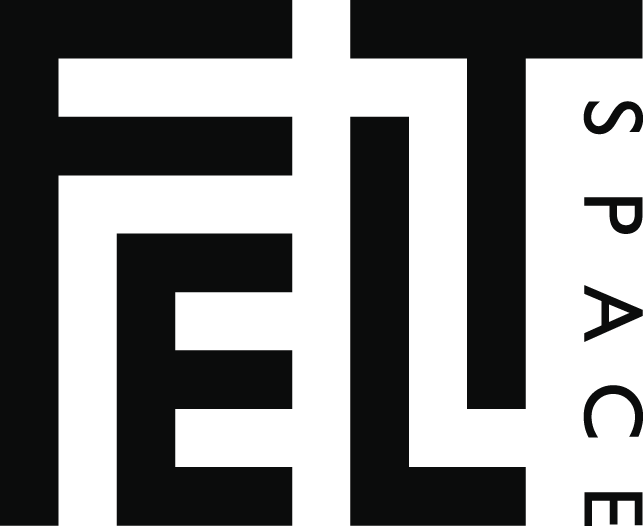I'M CORNERED/UNVIEWABLE ACTS IN SPACE - OCTOBER 2015
ARTISTS: ROBERTA RICH / RHIANNON JONES
AUTHOR – ANDREW ASSELS
Harsh syllables of Afrikaans resonate above the droning chatter of gallery goers. A projection of a young woman in a handsome blazer, wearing a pearl necklace, sits at a desk and addresses the camera directly. She has all the authority of a television news anchor delivering her monologue with crossed arms. This woman is Roberta Rich and she is in Front Gallery at FELTspace with her work I'm Cornered. Rich delivers her speech in Afrikaans and at the core is a racially driven provocation drawing out discomfort from viewers that she herself has felt in her experiences of race interrogation.
But you see I have no choice, I'm cornered.
Having learned Afrikaans as a second language (to Australian English), Rich immerses herself in South African culture as a way to explore her own identity. In placing her projection in the centre of the room, she has physically been caught between two cultures.
On the Northern wall hang legal documents; that of her father's birth, and grandparents wedding certificates. Afrikaans is written down the left margin and on the right is the English translation. Wedged between them is the identifying information in the clerical and precise font of a typewriter. The officiality of the documents bring out a sense of ease and familiarity as they are readily accepted papers. With these pieces, Rich tells of her personal history and hints at the cultural isolation she has felt.
The opposite wall has black Perspex squares engraved with Afrikaans phrases. wat kyk jy (what you see), and ek is wat ek is (I am what I am) imply Rich's acceptance, or perhaps resignation, to her racial divergence. Yet most poignantly, EK IS LIG EK IS DONKER (I AM LIGHT I AM DARK) reveals Rich's cognitive dissonance and desire to connect with her Australian and South African heritages. Rich unveils a fiercely personal experience, that which is normally invisible and makes it viewable to elicit a discussion.
Unviewable Acts in Space by Rhiannon Jones in the Back Gallery seeks to strip actions of their functions and pairs well with Rich's text and language based practise. A spool of red thread weaves itself around three corners of the back space until it finally decides to zigzag from ceiling to the floor. The action is clear, though the purpose is null; this is thread that is simply threading. The floor is occupied by two metallic objects; one is a sphere resting of the floor made entirely of safety pins, and the other snakes on top of a plinth and is made up of only paper clips. The safety pins are pinned and the paper clips are clipped, but offer no other functionality.
These are common objects made to commit the purest form of their purpose, and by doing so, Jones exposes a truth of the acts themselves. With no function, the viewer is forced to observe the objects and consider the act with which Jones created them. The time required, the amount of pins or clips, and material limitations all come to mind. Critically, the number of pins and clips were not counted so as to suggest an infinite number of acts, and therefore a multitude of acts without function.
With this body of work, Jones attempts to draw out questions of understanding, matters of how and why. Yet she draws on something deeper too, questions of futility, patience and renewal. Ironically, by stripping actions of their purpose she has created a singular new purpose for the installations: to provide a medium to view Unviewable Acts in Space.
